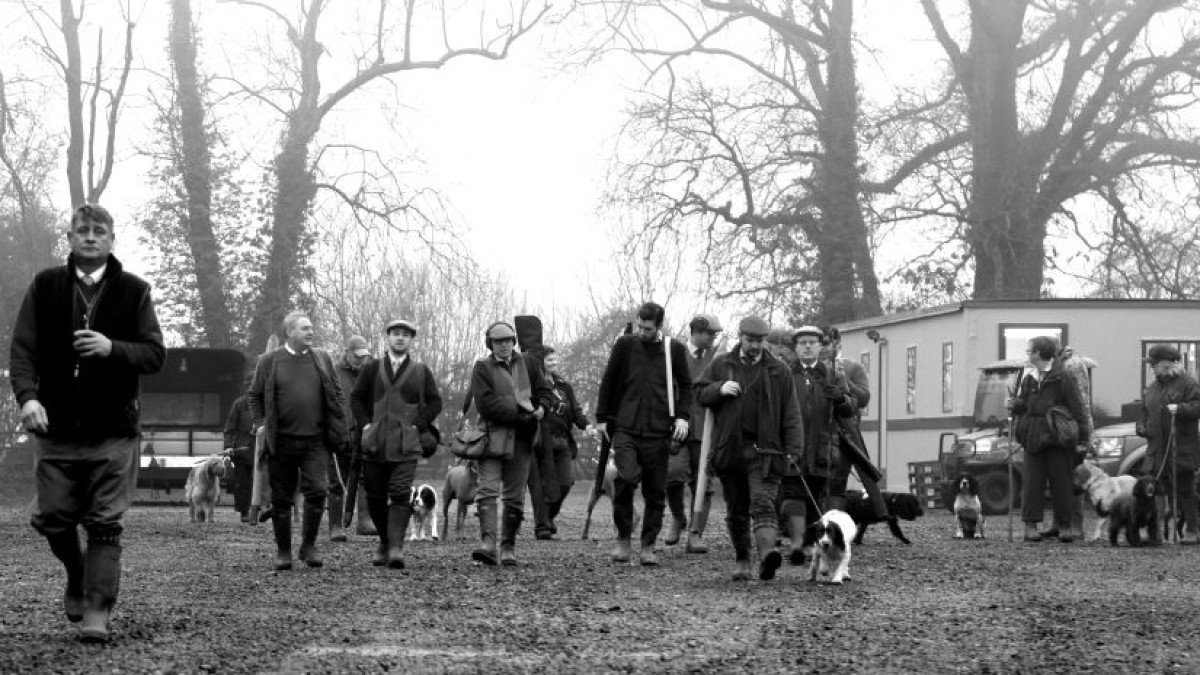Roles on the Driven Syndicate Shoot: The Essential Jobs of Guns, Peg Dogs, Beaters, and Pickers Up

On a driven syndicate shoot, various roles come together to create a smooth, enjoyable day, each contributing unique skills to the field.
Roles on the Driven Syndicate Shoot: The Essential Jobs of Guns, Peg Dogs, Beaters, and Pickers Up
Introduction:
On a driven syndicate shoot, various roles come together to create a smooth, enjoyable day, each contributing unique skills to the field. This guide explores the distinct responsibilities of beaters, pickers up, guns, and peg dogs and highlights the essential tools that help them succeed.
On a driven syndicate shoot, each role plays a vital part in creating an ethical and organized day. Beaters and pickers up support the logistics, while the guns and peg dogs work in unison for a safe and respectful shooting experience. Here’s a look at what each role entails, the equipment they use, and how they work together to ensure a successful shoot.
The Role of the Beater
Beaters are key to creating movement, flushing game birds towards the guns in a controlled way. Here’s how they contribute:
Organizing the Line: Beaters form a coordinated line, covering as much ground as possible. This strategic approach helps guide birds towards the guns at a safe distance and height.
Navigating Difficult Terrain: Working across challenging landscapes, beaters must be prepared with appropriate attire for all conditions, including sturdy boots, waterproof jackets, and gloves for colder weather.
Using Dogs to Flush Birds: Beaters often work with dogs, typically spaniels or other flushing breeds, but any well-trained dog with a strong flush instinct can be an asset. These dogs help push game birds out of denser cover, working in sync with their handlers.
Essential Equipment: Beaters often use flags, whistles and thumb sticks. Flags help direct birds and encourage them to gain height, whistles allow handlers to communicate with their dogs, and thumb sticks offer stability and support over uneven ground but can also be used to peg fencing down or raise it , allowing dogs and handlers to pass safely. All of these tools help beaters maintain control of the drive.
Skills for Beaters: Beaters need stamina, teamwork, and effective communication skills. Familiarity with the terrain and an understanding of bird behaviour also add value.
The Role of the Picker Up
Pickers up handle the ethical and efficient retrieval of all downed game. Here’s what they do:
Prioritizing Pricked Birds: The picker up’s first priority is retrieving pricked or injured birds to ensure they’re quickly and humanely dispatched on welfare grounds. This minimizes suffering and maintains the shoot’s ethical standards.
Using Trained Retrievers: Pickers up often work with retrieving breeds like Labradors or golden retrievers, but any dog with a reliable retrieve can contribute. These dogs are trained to retrieve birds gently and work independently in response to their handler’s cues.
Equipment Essentials: Pickers up rely on equipment like game carriers for transporting birds, priests for humanely dispatching pricked game, and thumb sticks for stability. Together, these tools enable efficient and respectful retrieval.
Appropriate Attire: Pickers up must be ready for any weather, with durable boots and weatherproof clothing to stay comfortable during long hours in the field.
Skills for Pickers Up: Marking fallen birds accurately, directing skilled dogs, and ensuring efficient retrieval are essential skills. A commitment to ethical hunting and a strong bond with their dog also make pickers up highly effective.
The Role of the Guns and Peg Dogs
On a driven shoot, the guns are positioned strategically to ensure a safe and controlled experience. They are supported by peg dogs, whose steadiness and discipline help create a calm and focused shooting environment.
Guns: Positioned at specific points along the shooting line (pegs), guns wait for the beaters to push game birds their way. Their role is to shoot birds that fly high and clear, ensuring safe shots for everyone involved. Guns must also prioritize accuracy and restraint to ensure an ethical, efficient shoot.
Peg Dogs: The role of a peg dog is to remain steady and quiet beside the gun until commanded to retrieve shot game. Unlike picking up dogs, peg dogs are trained to sit calmly and avoid distraction, showing discipline and restraint. This steadiness prevents premature retrieves and keeps the shooting line organized. Typically, Labradors are popular peg dogs for their calm, steady nature, but any breed that’s well-trained can excel at this role.
Essential Equipment for Guns and Peg Dogs:
Thumb Sticks and Walking Sticks: Many guns use thumb sticks to support their stance, providing stability on rough terrain and serving as a handy tool to steady their aim.
Appropriate Clothing: Guns wear field-suitable attire, such as tweed jackets and waterproof trousers, to withstand various weather conditions. This clothing is designed for warmth, durability, and camouflage to blend with the environment.
Skills for Guns and Peg Dogs: For guns, patience, accuracy, and adherence to safety protocols are critical. For peg dogs, obedience, steadiness, and self-control are essential skills to ensure they remain calm until it’s their time to retrieve.
Working Together for an Ethical and Successful Shoot
From the beaters’ organized flush to the guns’ disciplined shooting and the picker up’s ethical retrieves, every role on a driven shoot works together for a respectful and memorable day. Both beaters and pickers up rely on each other’s skills, while guns and peg dogs exemplify discipline and restraint.
Each person and dog brings their unique expertise to the field, making every driven syndicate shoot a well-orchestrated experience that respects both tradition and wildlife welfare.
Categories: : Shooting & Shoot Days
 Sue Watkins
Sue Watkins 